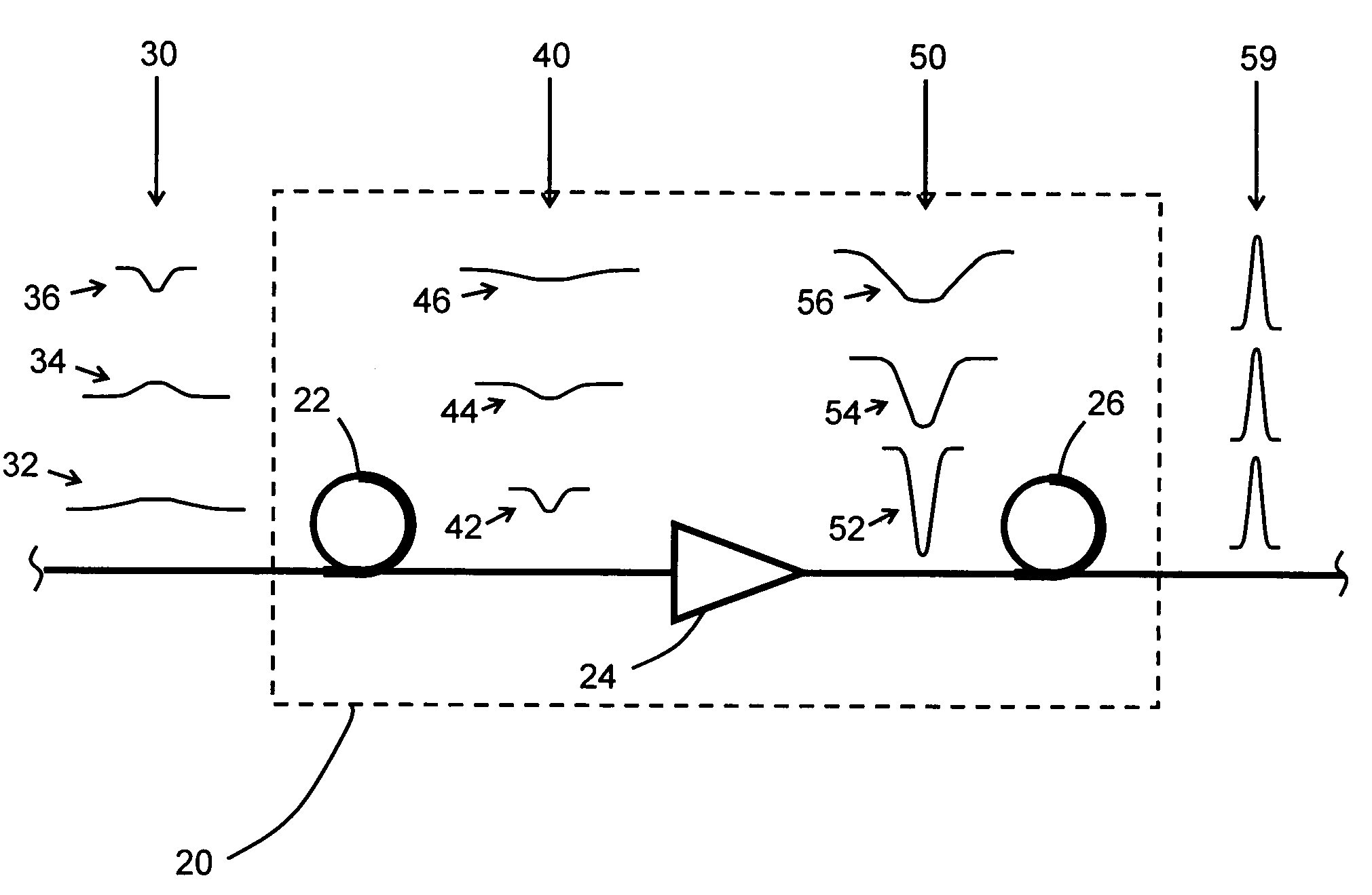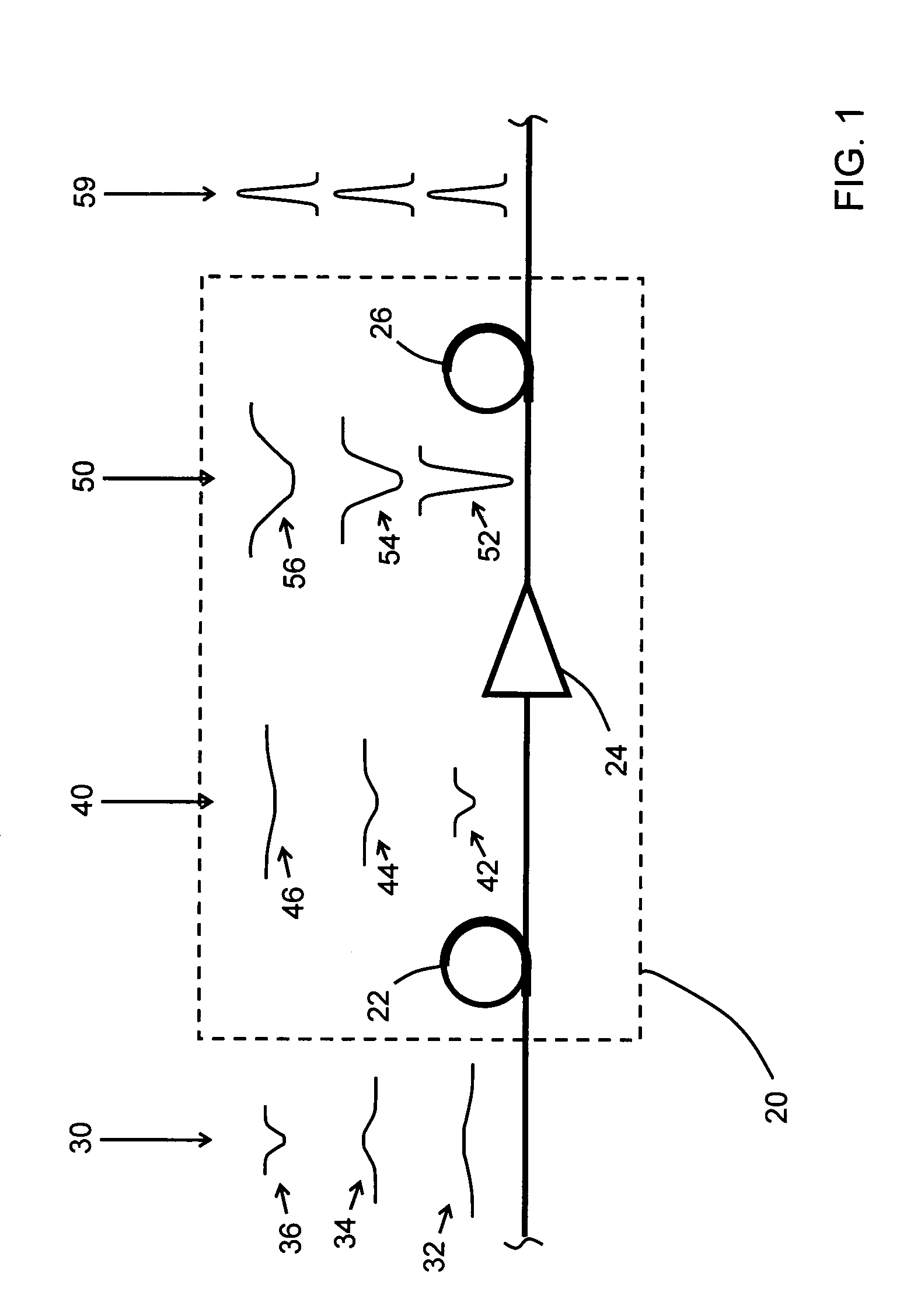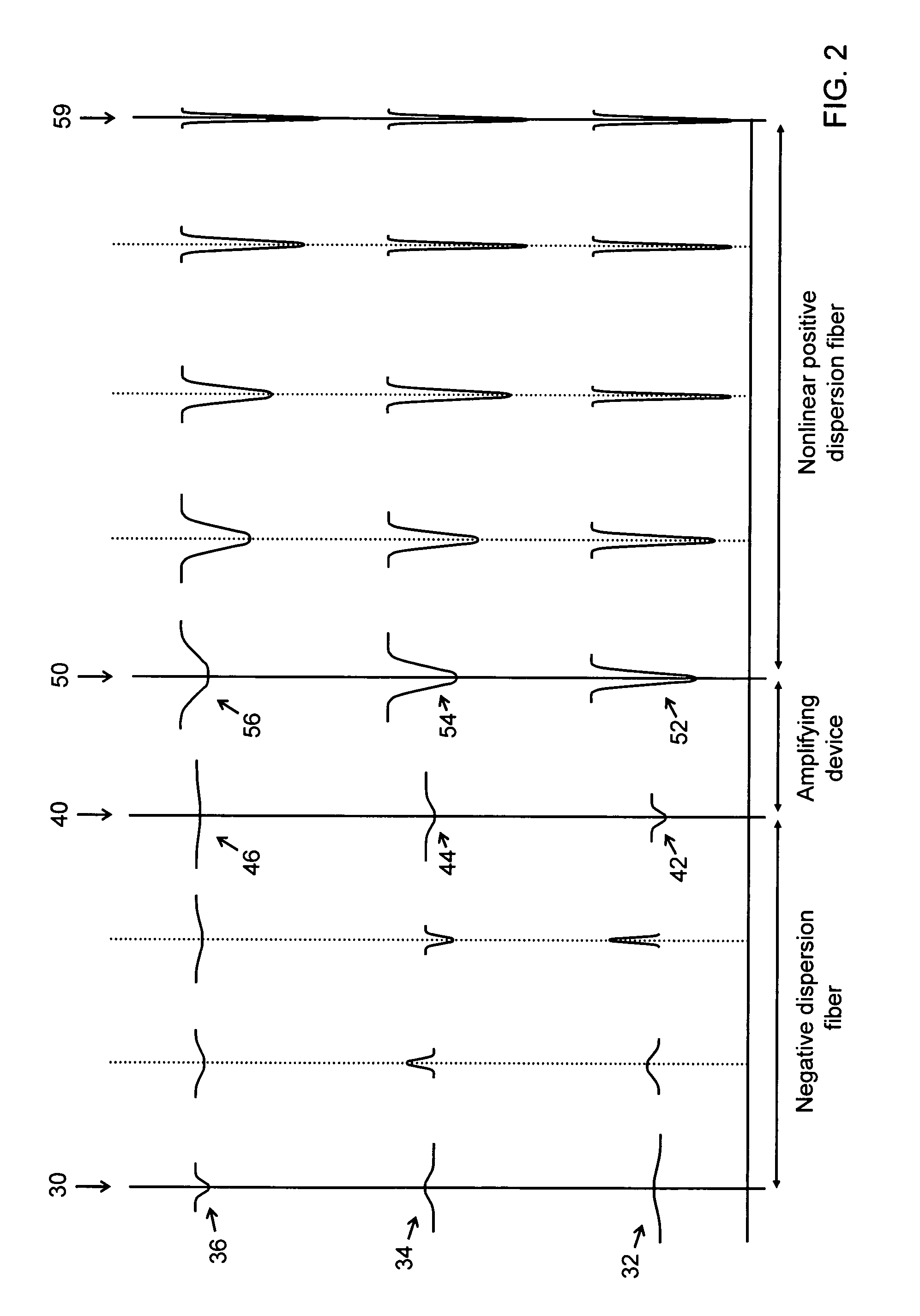Devices and methods for dynamic dispersion compensation
a dynamic dispersion and optical signal technology, applied in multiplex communication, instruments, cladded optical fibres, etc., can solve the problems of loss of signal fidelity, increased bit error rate, and increased insertion loss, so as to avoid high insertion loss and react quickly
- Summary
- Abstract
- Description
- Claims
- Application Information
AI Technical Summary
Benefits of technology
Problems solved by technology
Method used
Image
Examples
example 1
[0049]A dispersion compensating device including a negative dispersion fiber, an amplifying device, and a nonlinear positive dispersion fiber was constructed as shown in FIG. 1. The negative dispersion fiber was a flat slope dispersion compensating single mode fiber of a length sufficient to impose a dispersion of −440 ps / nm. The amplifying device included an erbium-doped fiber amplifier capable of 100 mW output along with a variable optical attenuator to control the gain of the amplifier. The nonlinear positive dispersion fiber had a dispersion of −22 ps / nm / km at a wavelength of 1550 nm, a propagation loss of about 0.45 dB / km, an effective area of 38 μm2, and a length of 20 km.
[0050]An optical transmission system was coupled to the input of the negative dispersion fiber. The optical network system included 12 optical nodes (e.g. 4 optical cross-connects and 7 optical add-drop multiplexers) with 11 spans of LEAF® 100 km in length connecting the nodes. Each span of LEAF® was compensa...
example 2
[0054]The effect of Raman pumping on the devices of the present invention was investigated using the experimental setup of FIG. 11. A negatively chirped input signal was generated by gain switching a DFB laser diode 112 at 10 GHz. The center wavelength of the signal was 1546.72 nm, and the spectral bandwidth and duration of the pulses were 0.32 nm and 21.7 ps, respectively. The estimated chirp parameter of the pulses was C=1.67. The gain of the laser diode was adjusted to provide a desired signal power. It is noted that the high power, negatively chirped input signal simulated the output of the amplifying device in the devices of the present invention.
[0055]The negatively chirped input signal was coupled into a 5773 m length of nonlinear positive dispersion fiber 114 having a loss at 1450 nm of 0.766 dB / km, a loss at 1550 nm of 0.448 dB / km, a mode field diameter at 1550 nm of 4.416 μm, a dispersion at 1550 nm of 3.961 ps / nm / km, a dispersion slope at 1550 nm of 0.0486 ps / nm2 / km, and ...
PUM
 Login to View More
Login to View More Abstract
Description
Claims
Application Information
 Login to View More
Login to View More - R&D
- Intellectual Property
- Life Sciences
- Materials
- Tech Scout
- Unparalleled Data Quality
- Higher Quality Content
- 60% Fewer Hallucinations
Browse by: Latest US Patents, China's latest patents, Technical Efficacy Thesaurus, Application Domain, Technology Topic, Popular Technical Reports.
© 2025 PatSnap. All rights reserved.Legal|Privacy policy|Modern Slavery Act Transparency Statement|Sitemap|About US| Contact US: help@patsnap.com



